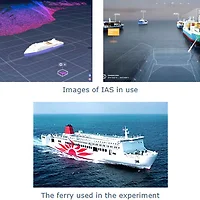DNV GL - 에너지 전환 전망
해상(Maritime) 에너지 2050년까지 전망
Maritime forecast to 2050 | DNV GL - Energy Transition Outlook
The Maritime Energy Transition Outlook (ETO) describes the consequences of the energy transition for the maritime industry, looking at goods to be transported within and between regions, and the types of vessels needed.
The Maritime ETO projects that heading to 2030 shipping will continue to enjoy robust growth, comparable to the last several decades. From 2030 to 2050, demand continues to increase, but slightly less rapidly – with the growth primarily in non-energy commodities, such as the container trade and non-coal bulk. As energy production and export patterns change, the fuel mix will be much more diverse.
In 2050 oil will remain the main option for trading vessels, but natural gas will step up to become the second-most widely used fuel, and new low carbon alternatives will proliferate.
해상 에너지 전환 전망 (ETO)은 해상 산업에 대한 에너지 전환의 결과를 설명하고, 지역 내 또는 지역간으로 운송 될 물품과 필요한 선박 유형을 살펴 봅니다.
2030 년 해운으로 향하는 해상 ETO 프로젝트는 지난 수십 년에 비하면 견조한 성장세를 이어갈 것입니다.
2030 년에서 2050 년까지 컨테이너 무역 및 비 석탄 벌크와 같은 비 에너지 상품의 증가로 수요가 지속적으로 증가하지만 다소 빠르게 감소합니다.
에너지 생산 및 수출 패턴이 변함에 따라 연료 믹스가 훨씬 다양해질 것입니다. 2050 년에 유류는 무역선의 주요 옵션으로 남아있을 것이지만 천연 가스가 두 번째로 널리 사용되는 연료가 될 것이며 새로운 저탄소 대안이 확산 될 것입니다.
http://maritimenews.tistory.com/104?category=777194




